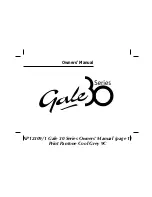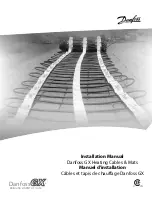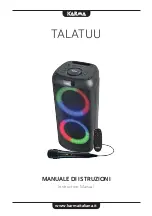
116
Sun StorEdge T3+ Array Installation and Configuration Guide • April 2002
Configuring Cache
Each Sun StorEdge T3 array controller unit has a 256-Mbytes data cache; each Sun
StorEdge T3+ array controller unit has 1 GByte of data cache. Writing to cache
improves write performance by staging data in cache, assembling the data into data
stripes, and then destaging the data from cache to disk, when appropriate. This
method frees the data host for other operations while cache data is being destaged,
and it eliminates the read-modify-write delays seen in noncache systems. Read cache
improves performance by determining which data will be requested for the next
read operation and prestaging this data into cache. RAID 5 performance is also
improved by coalescing writes.
Performance and Redundancy
Cache mode can be set to the following values:
■
Auto. The cache mode is determined as either write-behind or write-through,
based on the I/O profile. If the array has full redundancy available, then caching
operates in write-behind mode. If any array component is nonredundant, the
caching mode is set to write-through. Read caching is always performed. Auto
caching mode provides the best performance while retaining full redundancy
protection.
Auto is the default cache mode for Sun StorEdge T3+ array.
■
Write-behind. All write operations are cached. An algorithm determines when
the data is destaged or moved from cache to disk. Write-behind cache improves
performance, because a write to a high-speed cache is faster than a write to a
normal disk.
Use write-behind cache mode with a workgroup configuration when you want to
force write-behind caching to be used.
Caution –
In a workgroup configuration, use a host-based mirroring solution to
protect data. This configuration does not offer the redundancy to provide cache
mirroring, and operating without a host-based mirroring solution could lead to data
loss in the event of a controller failure.
■
Write-through. This cache mode forces write-through caching to be used. In
write-through cache mode, data is written through cache in a serial manner and is
then written to the disk. Write-through caching does not improve write
performance. However, if a subsequent read operation needs the same data, the
read performance is improved, because the data is already in cache.
Summary of Contents for StorEdge T3+
Page 14: ...xiv Sun StorEdge T3 Array Installation and Configuration Manual April 2002 ...
Page 22: ...xxii Sun StorEdge T3 Array Installation and Configuration Manual April 2002 ...
Page 25: ...Chapter 1 Overview of the Sun StorEdge T3 Array 3 FIGURE 1 1 Sun StorEdge T3 Array ...
Page 42: ...20 Sun StorEdge T3 Array Installation and Configuration Manual April 2002 ...
Page 74: ...52 Sun StorEdge T3 Array Installation and Configuration Manual April 2002 ...
Page 84: ...62 Sun StorEdge T3 Array Installation and Configuration Manual April 2002 ...
Page 118: ...96 Sun StorEdge T3 Array Installation and Configuration Manual April 2002 ...
Page 148: ...126 Sun StorEdge T3 Array Installation and Configuration Guide April 2002 ...
Page 156: ...134 Sun StorEdge T3 Array Installation and Configuration Manual April 2002 ...
Page 168: ...146 Sun StorEdge T3 Array Installation and Configuration Manual April 2002 ...
Page 174: ...152 Sun StorEdge T3 Array Installation and Configuration Manual April 2002 ...
Page 202: ...180 Sun StorEdge T3 Array Installation and Configuration Manual April 2002 ...
Page 208: ...186 Sun StorEdge T3 Array Installation and Configuration Manual April 2002 ...
Page 213: ...Appendix B Illustrated Parts 191 FIGURE B 6 Door Assembly Front Panel Front panel ...
Page 214: ...192 Sun StorEdge T3 Array Installation and Configuration Manual April 2002 ...
Page 222: ...200 Sun StorEdge T3 Array Installation and Configuration Manual April 2002 ...
















































